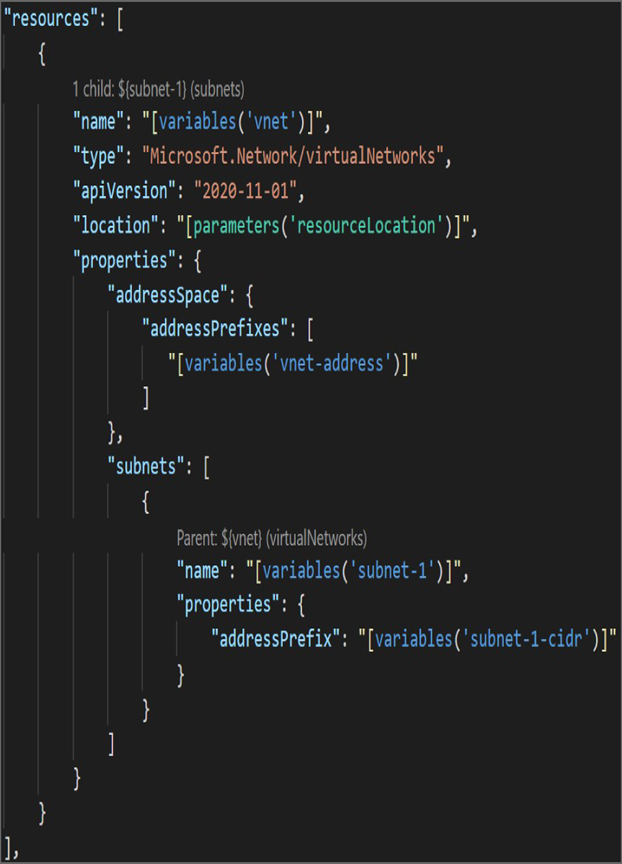In the resources section, you will be defining the Azure resources that you want to create. The set of resources referenced in this section make up your deployment. The following is an example used for creating a virtual network, and you can see how you are referencing the parameters and variables that you declared earlier.
It’s easy to generate code snippets for resources. For example, if you need to create a virtual network, then you can start typing vnet in the resources section, and Visual Studio Code will start showing the suggestions (refer to Figure 8.7).

FIGURE 8.7 Resource code snippets
Selecting the first one in Figure 8.7 generates the ARM code for the virtual network with all the required fields. Now you can tweak this per your requirements. In the following example, you can see how we are referencing parameters and variables:
“resources”: [
{
“name”: “virtualNetwork1”,
“type”: “Microsoft.Network/virtualNetworks”,
“apiVersion”: “2020-11-01”,
“location”: “[parameters(‘resourceLocation’)]”,
“properties”: {
“addressSpace”: {
“addressPrefixes”: [
“[variables(‘vnet-address’)]”
]
},
“subnets”: [
{
“name”: “[variables(‘subnet-1’)]”,
“properties”: {
“addressPrefix”: “[variables(‘subnet-1-cidr’)]”
}
}
]
}
}
]
If the code block is hard to interpret, refer to Figure 8.8.

FIGURE 8.8 Resource code for virtual network
Outputs (outputs)
Finally, you have the outputs section. This section can be used to output any information to the end user when they run the template. Let’s say you are deploying a virtual machine, and when the template runs, you want to output the DNS label of the VM so that the user can connect to the VM immediately without the need to check the IP address or label. This is not mandatory; you can still complete the deployments without outputs.
An example has been added for your reference:
“outputs”: {
“hostname”: {
“type”: “string”,
“value”: “[reference(variables(‘publicIPAddressName’)).dnsSettings.fqdn]”
}
}
Now that you know different sections of the ARM template, let’s compose an ARM template and see how you can deploy that to a resource group.